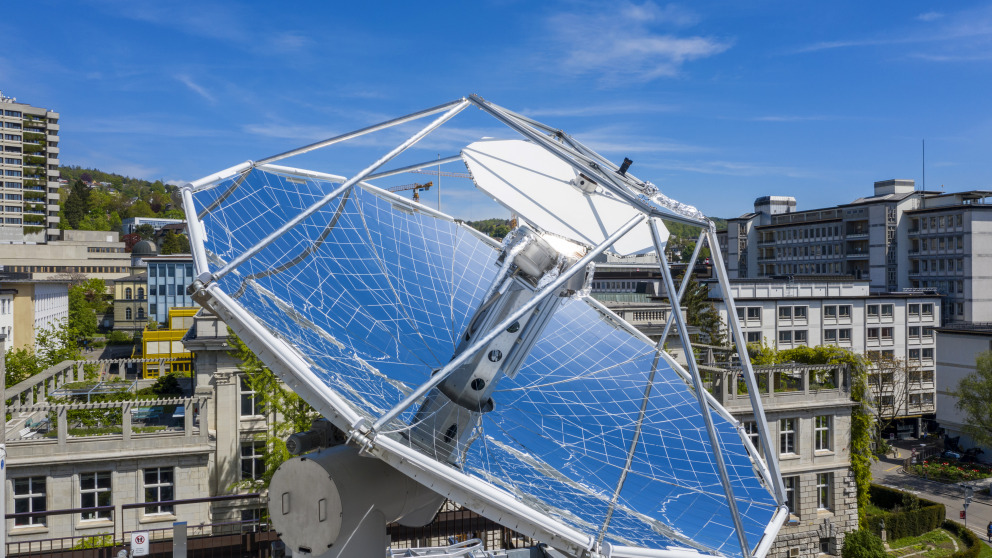2021-11-04 ドイツ連邦共和国サステナビリティ研究所(IASS)

・ スイス・チューリッヒ工科大学(ETH Zurich)が 2019 年に開発し継続して稼働中のミニソーラーリファイナリーの機能と、同リファイナリーによる燃料製造を拡大するインセンティブを提供する政策的枠組みの概要を発表。産業規模へのスケールアップと競争力の獲得が次の目標。
・ 同リファイナリーは、太陽エネルギーを利用して大気中の CO2 と水を分解し、水素と一酸化炭素(CO)から成る合成ガスを作る。合成ガスは、灯油、メタノール等の炭化水素に転換できる。
・ 実際の太陽光条件下で安定して稼働しながら、さらなる研究開発に向けたユニークなプラットフォームを提供する同リファイナリーでは、太陽光と空気をドロップイン燃料に転換する全熱化学的プロセスの技術的な実現可能性を成功裏に実証。産業アプリケーションでの利用に十分な発展を遂げている。
・ 同リファイナリー技術の全プロセスの分析では、産業規模で生産した場合の燃料コストが 1.20~2ユーロ/ℓとなり、高日射が得られる砂漠地域は特に最適な生産サイトとなる。
・ 農地の有無で生産が制限されるバイオ燃料とは異なり、同リファイナリー技術は 1%を下回る世界の乾燥地を利用することでジェット燃料の世界需要を満たし、食料や試料の生産との競合もない。リファイナリーの建設に再生可能エネルギーやカーボンニュートラル手法で製造されたガラスや鉄鋼を利用すれば、CO2 排出量をほぼゼロまで低減可能。
・ ただし、初期投資コストの高い同技術の市場への安定した参入には、政策的な支援が不可欠となる。EU の現行支援策による CO2 排出量取引やオフセットでは、同リファイナリー技術による燃料の市場需要促進には不十分であるため、太陽光で生産する燃料利用の特定のシェアを航空機に割り当てる制度を提案。
・ 燃料価格が高く生産容量の低い市場導入の初期フェーズでは、0.1%のシェアを推奨。これによる航空料金への影響はほとんどなく、燃料生産施設の建設を促進して技術発展と低価格への学習曲線の引き金となる。その後は追加的な支援策無く市場ブレイクスルーが達成できるまで、割り当て制度を徐々に引き上げる。
URL: https://www.iass-potsdam.de/en/news/making-aircraft-fuel-sunlight-and-air
<NEDO海外技術情報より>
(関連情報)
Nature 掲載論文(アブストラクトのみ:全文は有料)
Drop-in Fuels from Sunlight and Air
URL: https://www.nature.com/articles/s41586-021-04174-y
Abstract
Aviation and shipping currently contribute approximately 8% of total anthropogenic CO2 emissions, with growth in tourism and global trade projected to increase this contribution further1,2,3. Carbon-neutral transportation is feasible with electric motors powered by rechargeable batteries, but is challenging, if not impossible, for long-haul commercial travel, particularly air travel4. A promising solution are drop-in fuels (synthetic alternatives for petroleum-derived liquid hydrocarbon fuels such as kerosene, gasoline or diesel) made from H2O and CO2 by solar-driven processes5,6,7. Among the many possible approaches, the thermochemical path using concentrated solar radiation as the source of high-temperature process heat offers potentially high production rates and efficiencies8, and can deliver truly carbon-neutral fuels if the required CO2 is obtained directly from atmospheric air9. If H2O is also extracted from air10, feedstock sourcing and fuel production can be colocated in desert regions with high solar irradiation and limited access to water resources. While individual steps of such a scheme have been implemented, here we demonstrate the operation of the entire thermochemical solar fuel production chain, from H2O and CO2 captured directly from ambient air to the synthesis of drop-in transportation fuels (for example, methanol and kerosene), with a modular 5 kWthermal pilot-scale solar system operated under field conditions. We further identify the research and development efforts and discuss the economic viability and policies required to bring these solar fuels to market.



